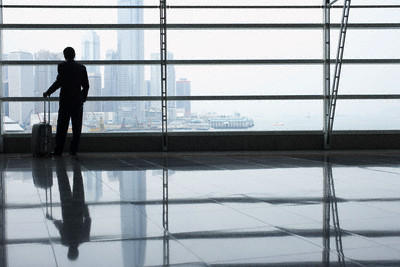By
Reuters
Reuters
Published
Feb 2, 2011
Feb 2, 2011
China's travel bug spreads, bodes well for luxury
By
Reuters
Reuters
Published
Feb 2, 2011
Feb 2, 2011
BEIJING | Wed Feb 2, 2011 - (Reuters) - China's itch to travel abroad is spreading to second-tier cities, feeding a boom that is benefiting the tourism and retail industries across the globe and putting the country on the cusp of overtaking the United States as the largest outbound tourism market.
 |
The findings of a survey by market research group Nielsen are consistent with evidence of strong growth in sales of autos and consumer goods as incomes rise in second-tier cities away from the prosperous seaboard.
Seven percent of the more than 3,500 respondents to the survey said they had travelled abroad in 2010, up from 5 percent in 2008.
The Nielsen China Outbound Travel Monitor found that 5 percent of those surveyed in second-tier cities in northern and eastern China travelled overseas in 2010, up from just 2 percent and 3 percent respectively in the earlier two years.
Five percent was the rate recorded for Beijing in 2008. By last year, the figure for the capital had risen to 9 percent, trailing fellow Tier 1 city Shanghai's 15 percent and Guangzhou's 20 percent.
Hong Kong and Macau remain by far the most popular destinations.
Well-heeled Chinese in major cities are spreading their wings further afield, according to Umang Pabaru, Nielsen's managing director for consumer research in Greater China.
"It is very apparent that Tier 1 cities are getting more sophisticated, but Tier 2 is catching up quickly as income levels rise," he said.
More and more Chinese were travelling for leisure, rather than to visit relatives, Pabaru said. Medical tourism to Thailand and South Korea was growing fast, while Japan was an increasingly popular destination.
"As they get richer, they are getting more adventurous," he said. Chinese tourists made 57.4 million outbound trips in 2010, up 20.4 percent on the year, according to government data. In comparison, 61.5 million Americans travelled abroad in 2009, the latest year for which figures are available.
By 2015, the number of outbound Chinese tourists is likely to reach nearly 84 million, state media quoted Shao Qiwei, chairman of China's National Tourism Administration, as saying last month.
HAVE MONEY, WILL TRAVEL
Research by Hong Kong-based brokers CLSA also painted a bullish outlook for tourism as 24 percent of a panel of consumers consulted by the firm plans to take a trip abroad in the next 12 months, up from the 16 percent who travelled in the past year.
Yet Chinese travel is still low compared with its neighbours.
The level of Chinese departures as a percentage of the population is the same as Japan and Taiwan in 1984 and Korea in 1991, according to a report by research analysts Aaron Fischer and Mariana Kou.
With mainland Chinese buying 56 percent of their luxury goods abroad, high-end retailers outside China -- principally Hong Kong -- stand to be big beneficiaries of the unfolding boom in tourism and disposable incomes.
Fischer and Kou estimated that mainland Chinese demand for luxury goods would soar to 42 percent of the global total by 2020 from just 13 percent in 2010.
Along the way, the domestic Chinese market for luxury goods is on course to overtake Japan's by 2014, CLSA projects.
Some 65 percent of the customers it surveyed bought luxury goods during their last trips abroad, partly due to the Chinese custom of gift-giving and partly because taxes and import duties make the goods in China more expensive.
CLSA said according to LVMH (LVMH.PA), the luxury retailer's prices in Shanghai are 35 percent higher than in Paris.
"Luxury goods feature high on the shopping list for Chinese travellers. And total demand is highly geared to tourism," Fischer and Kou wrote.
(Reporting by Alan Wheatley, Global Economics Correspondent; Editing by Vinu Pilakkot)
© Thomson Reuters 2024 All rights reserved.
























